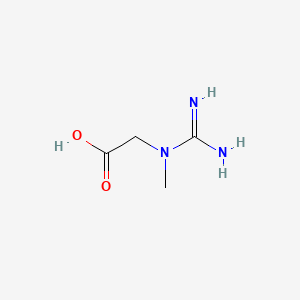|
Name: Creatine
Type: Performance Enhancer
AKA: Creatine Monohydrate

|
|
II. Natural Derivative
Synthetic substance, no natural derivative

|
|
III. Chemical Profile (IUPAC name)

|
|
IV. History
Creatine, a compound found in muscle tissue, was first identified in the early 19th century. It has been used as a dietary supplement since the 1990s to enhance athletic performance and muscle growth. Its role in sports and bodybuilding reflects its significance in the enhancement of physical performance and muscle recovery.

|
|
|
|
VI. Physical Effects
Creatine is a compound used to enhance athletic performance and muscle mass. It acts as an upper, improving strength and energy. Short-term use is generally safe and effective for increasing muscle mass, but excessive use may cause gastrointestinal issues and dehydration. Safe use involves recommended dosing and adequate hydration. Recent research supports its benefits in sports and exercise while noting the need for proper usage.  |
|
VII. Psychological Effects
Creatine, a supplement used for enhancing physical performance, can influence mood and cognition. Immediate effects include improved cognitive function and mood enhancement. Long-term use is associated with potential cognitive benefits and overall mental well-being. Research supports its role in improving mood and reducing symptoms of depression.
 |
|
VIII. Culture
Creatine is a naturally occurring compound with a long history of use in sports and bodybuilding for its performance-enhancing effects. It is mentioned in modern sports science and has been used since the early 20th century. Its cultural significance lies in its widespread acceptance and use among athletes and fitness enthusiasts. Proponents highlight its benefits for strength and muscle mass, while opponents raise concerns about potential side effects. Its use is primarily for athletic performance, with significant cultural impact in the sports and fitness communities.
 |
